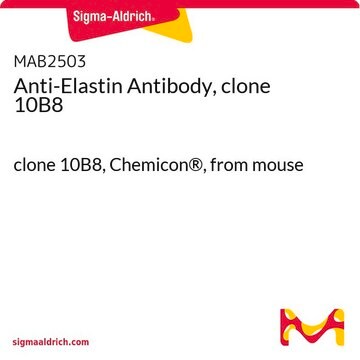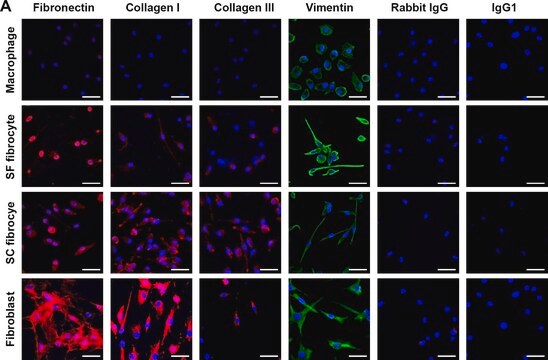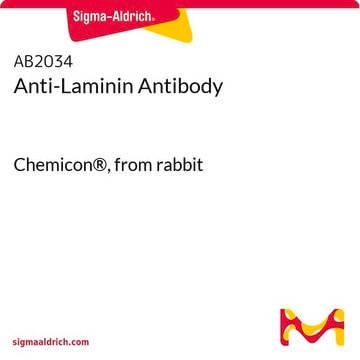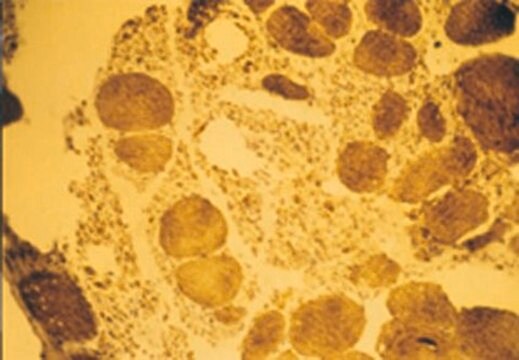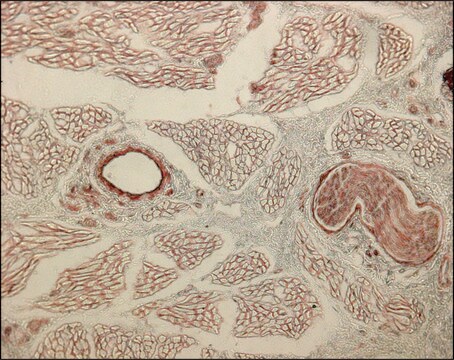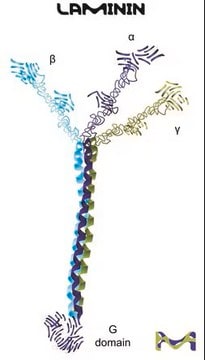Kluczowe dokumenty
SAB4200719
Anti-Anti-Laminin (LAMA1) antibody

mouse monoclonal, LAM-89
Synonim(y):
Anti-LAMA, Anti-LAMA1
Wybierz wielkość
2050,00 zł
Wybierz wielkość
About This Item
2050,00 zł
Polecane produkty
Nazwa produktu
Anti-Laminin antibody, Mouse monoclonal, clone LAM-89, purified from hybridoma cell culture
pochodzenie biologiczne
mouse
Poziom jakości
forma przeciwciała
purified from hybridoma cell culture
rodzaj przeciwciała
primary antibodies
klon
LAM-89, monoclonal
Formularz
buffered aqueous solution
masa cząsteczkowa
~850 kDa
reaktywność gatunkowa
feline, human, porcine
rozszerzona walidacja
independent
Learn more about Antibody Enhanced Validation
stężenie
~1.0 mg/mL
metody
ELISA: suitable
electron microscopy: suitable
immunoblotting: 0.03-0.06 μg/mL using Laminin from Engelbreth-Holm-Swarm murine sarcoma basement membrane
immunofluorescence: suitable
immunohistochemistry: 20-40 μg/mL using pronase-retrieved formalin-fixed, paraffin-embedded human tongue sections.
izotyp
IgG1
numer dostępu UniProt
Warunki transportu
dry ice
temp. przechowywania
−20°C
docelowa modyfikacja potranslacyjna
unmodified
informacje o genach
cat ... Lama1(101083299)
human ... LAMA1(284217)
pig ... Lama1(100625589)
Powiązane kategorie
Opis ogólny
Specyficzność
Immunogen
Zastosowanie
Działania biochem./fizjol.
Postać fizyczna
Przechowywanie i stabilność
Oświadczenie o zrzeczeniu się odpowiedzialności
Nie możesz znaleźć właściwego produktu?
Wypróbuj nasz Narzędzie selektora produktów.
Kod klasy składowania
10 - Combustible liquids
Klasa zagrożenia wodnego (WGK)
WGK 1
Temperatura zapłonu (°F)
Not applicable
Temperatura zapłonu (°C)
Not applicable
Wybierz jedną z najnowszych wersji:
Certyfikaty analizy (CoA)
Nie widzisz odpowiedniej wersji?
Jeśli potrzebujesz konkretnej wersji, możesz wyszukać konkretny certyfikat według numeru partii lub serii.
Masz już ten produkt?
Dokumenty związane z niedawno zakupionymi produktami zostały zamieszczone w Bibliotece dokumentów.
Klienci oglądali również te produkty
Active Filters
Nasz zespół naukowców ma doświadczenie we wszystkich obszarach badań, w tym w naukach przyrodniczych, materiałoznawstwie, syntezie chemicznej, chromatografii, analityce i wielu innych dziedzinach.
Skontaktuj się z zespołem ds. pomocy technicznej


